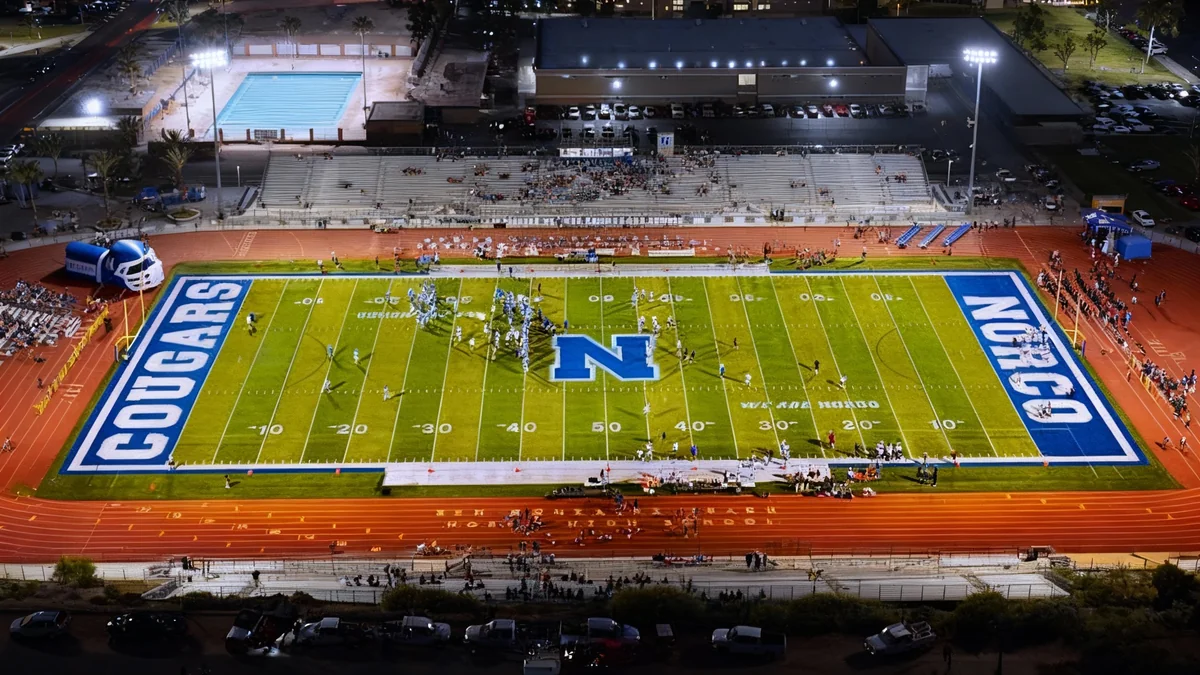Penn State University has fired head football coach James Franklin, a decision that marks a significant departure from the institution's long-standing tradition of coaching stability. The move came after a sudden three-game losing streak that erased a promising start to the season and is accompanied by a near-record-breaking financial payout.
Franklin's dismissal is the first time in over a century that the university has fired a head football coach for on-field performance, signaling a major shift in philosophy for the Nittany Lions program amid the high-pressure landscape of modern college athletics.
Key Takeaways
- Penn State fired head coach James Franklin after 12 seasons, a move considered highly unusual for the historically stable program.
- The decision followed a three-game losing streak, including losses to lower-ranked and previously winless teams.
- Franklin is owed a buyout of approximately $50 million, the second-largest in college football history.
- Experts and former players say the firing reflects the new financial pressures of college football, including NIL and the transfer portal.
- Interim coach Terry Smith will take over a team that began the season with national title hopes but now sits at a 3-3 record.
An Unprecedented Decision for Penn State
Penn State's decision to part ways with James Franklin is a stark break from its history. According to Rex Naylor Jr., a historian of Nittany Lions football, Franklin is the only head coach in more than 100 years to be fired by the university based on performance. The only other modern dismissal was that of Joe Paterno in 2011, which was a result of the Jerry Sandusky scandal, not the team's record.
"They never fire anybody," Naylor said, emphasizing how unusual the move is. "It is way out of character." For decades, Penn State cultivated a reputation for loyalty and patience, a culture Naylor describes as "family oriented" and comparable to the NFL's Pittsburgh Steelers.
A History of Stability
The university's tradition of retaining coaches is well-documented. Penn State has had only four full-time head coaches since 1950, a statistic largely influenced by Joe Paterno's 46-year tenure. This stability created an environment where, as Naylor noted, the expectation was to "be competitive," with an understanding that some down years were inevitable.
Franklin's tenure lasted 12 years, during which he accumulated 104 wins. This record ties him with Rip Engle for the second-most wins in the school's history. He led the Nittany Lions to six seasons with 10 or more wins, including the three seasons preceding his dismissal.
The Season's Rapid Decline
The firing came just 15 days after Penn State was an undefeated team and ranked third in the nation. The team, which started the 2025 season ranked No. 2 in the AP poll, saw its national championship aspirations crumble in less than a month.
The collapse began on September 27 with a double-overtime loss to then-No. 6 Oregon. That defeat dropped Franklin’s record against AP top-10 opponents to 4-21 during his time at Penn State. The program's fortunes continued to spiral downward with two shocking consecutive losses.
First, the Nittany Lions fell on the road to a previously winless UCLA team, despite being favored by more than 20 points. The following week, they lost at home to unranked Northwestern. During the fourth quarter of the Northwestern game, starting quarterback Drew Allar suffered a season-ending injury, compounding the team's problems.
"This whole thing just collapsed on him in three weeks," Naylor observed, summarizing the rapid and unexpected downturn.
The on-field struggles had immediate off-field consequences. During the loss to Northwestern, cascades of boos were heard from the Beaver Stadium crowd. Recruiting also took a hit, with two of the program's top recruits in the Class of 2027 publicly wavering on their commitments just before Franklin was fired.
The New Financial Reality of College Football
While the decision to fire a successful coach may seem surprising, it reflects the evolving financial landscape of major college sports. Franklin, who was earning $8.5 million annually, is owed a buyout of approximately $50 million.
A Historic Buyout
According to USA Today, Franklin's $50 million buyout is the second-largest in the history of college football. It is surpassed only by the $76 million paid to Jimbo Fisher by Texas A&M in 2023. It is more than double the third-highest buyout, the $21.5 million Gus Malzahn received from Auburn.
Former Penn State player Mike Guman, who played under Paterno before a career with the Los Angeles Rams, said the university's decision cannot be viewed solely through the lens of the payout. He argued that the financial risks of retaining Franklin were potentially even greater.
"You look at it from the money that you're going to lose," Guman explained. "You think of big donors. You think of those people who are supporting the NIL. You turn in a .500 record, those guys disappear."
Pressure in the NIL Era
Guman noted that the traditional, patient culture of Penn State football is no longer viable in the current environment defined by Name, Image, and Likeness (NIL) deals and the transfer portal. The pressure to win immediately has intensified dramatically.
"I don't think you can attribute the way things used to be as to how they are now," Guman said. "It’s such a different ball game right now … There’s no margin for error. You gotta deliver right away. You gotta win and keep the people coming."
The Broader Impact on the University and Community
The success of Penn State's football program extends far beyond the stadium. It serves as the financial engine for the university's athletic department and is a major economic driver for the entire State College region.
A 2022 study found that an average home football game generated about $12 million for the local economy from visitor spending over the weekend. The football team's revenue, which was approximately $113 million in the 2023-24 fiscal year, is crucial for funding Penn State's 28 other varsity sports.
"It impacts so many different things: all the other sports programs at the university, the livelihood of the town of State College and everything else," Guman stated. "You’ve got to have success, especially in that sport at Penn State."
The task of stabilizing the program now falls to interim head coach Terry Smith, a former Penn State player. He takes over a 3-3 team that is now in danger of not qualifying for a bowl game, a scenario that seemed impossible just a few weeks ago.
While Franklin is often credited with helping the program rebuild after the Sandusky scandal, some, like Naylor, argue that his predecessor, Bill O’Brien, deserves more recognition for navigating the team through its most turbulent period. "I don’t think [Franklin] solidified the program," Naylor said. "That was Bill O’Brien because that program could have collapsed."





